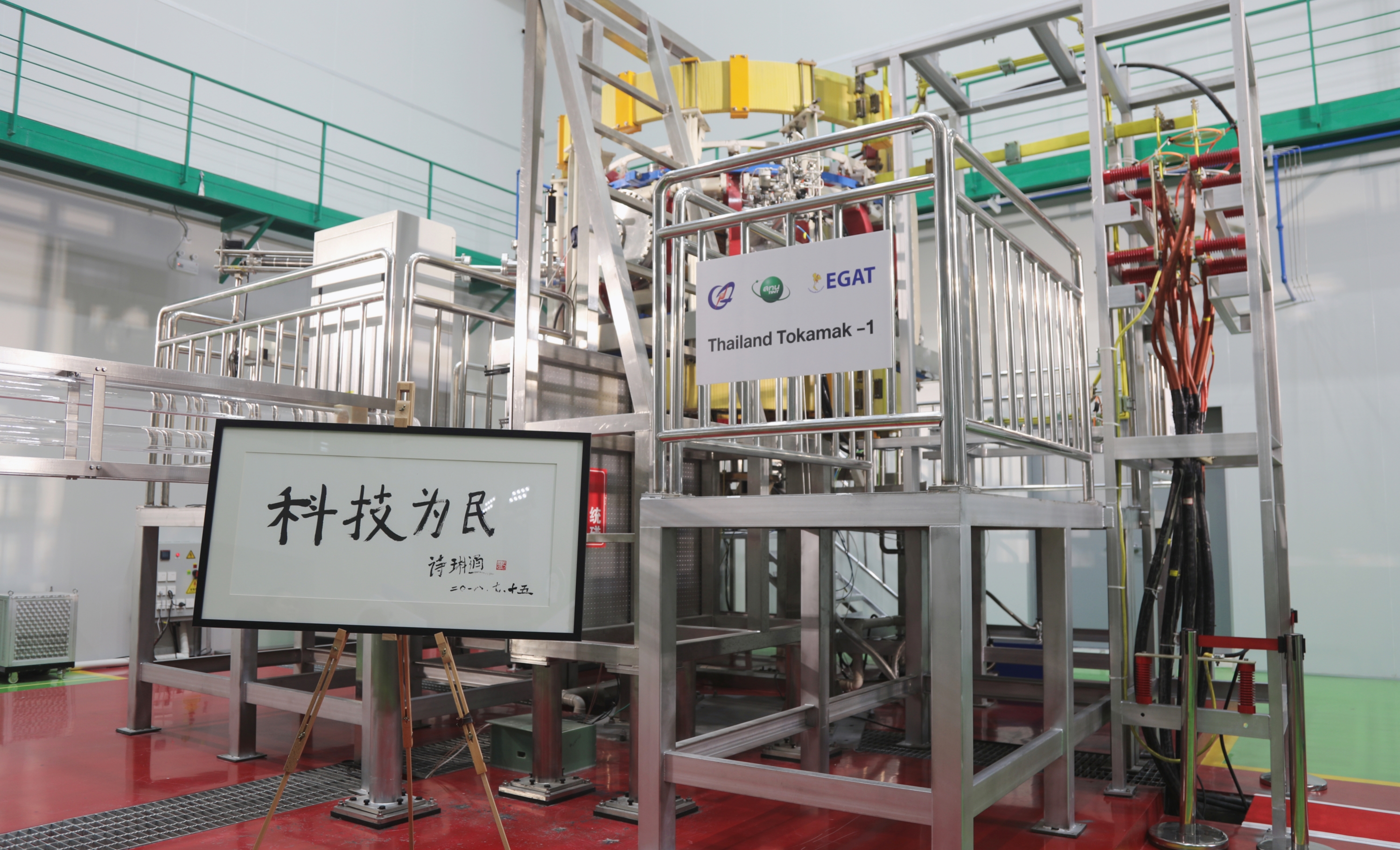
Thailand Tokamak 1 (TT-1), jointly developed by the Institute of Plasma Physics, Chinese Academy of Sciences (ASIPP) and Thailand Institute of Nuclear Technology (TINT), begins to operate on July 25.?(Photo?provided?by?ASIPP)
By?LIN?Yuchen
Thailand Tokamak 1 (TT-1), jointly developed by the Institute of Plasma Physics, Chinese Academy of Sciences (abbreviated as ASIPP) and Thailand Institute of Nuclear Technology (TINT), began to operate on July 25, after being transported to Thailand in January as a donation from ASIPP and beginning its trial operation in May this year.
Tokamak refers to a device and related technology designed to utilize magnetic confinement to achieve controlled nuclear fusion, and is a key direction in the international exploration of obtaining clean energy from nuclear fusion.
TT-1 is Thailand's first experimental tokamak device, as well as the first of its kind for the Association of Southeast Asian Nations (ASEAN). It is expected to drive the field of nuclear fusion applications in Thailand and help the country establish a center for tokamak research and development in the ASEAN region.
The tokamak device is based on the fully upgraded and modified version of the second-generation tokamak HT-6M developed by ASIPP in 1984.
China is at an advanced level of nuclear fusion research. The Experimental Advanced Superconducting Tokamak based in Hefei set a world record this April by realizing 403 seconds of plasma operation in long -pulse, high -confinement mode, breaking its previous record of 101 seconds set in May 2021.
In August 2017, ASIPP and TINT signed a cooperation agreement, deciding to deliver the HT-6M device to TINT and provide all-round assistance to TINT, including device adjustments and fusion expertise training. The device was later shipped to Thailand last December.
The completion of the TT-1 device and its official launching into experimental operation is a fruitful outcome of Sino-Thai fusion cooperation in recent years and one of the highlights of Sino-Thai cooperation in science and technology.
The trio will conduct a series of experiments in fields such as life science, fluid physics, combustion science and materials science. Notably, this is the first time that fruit flies have been taken on a Chinese space mission as experimental subjects. What made scientists choose fruit flies? What experiment will they undergo?
